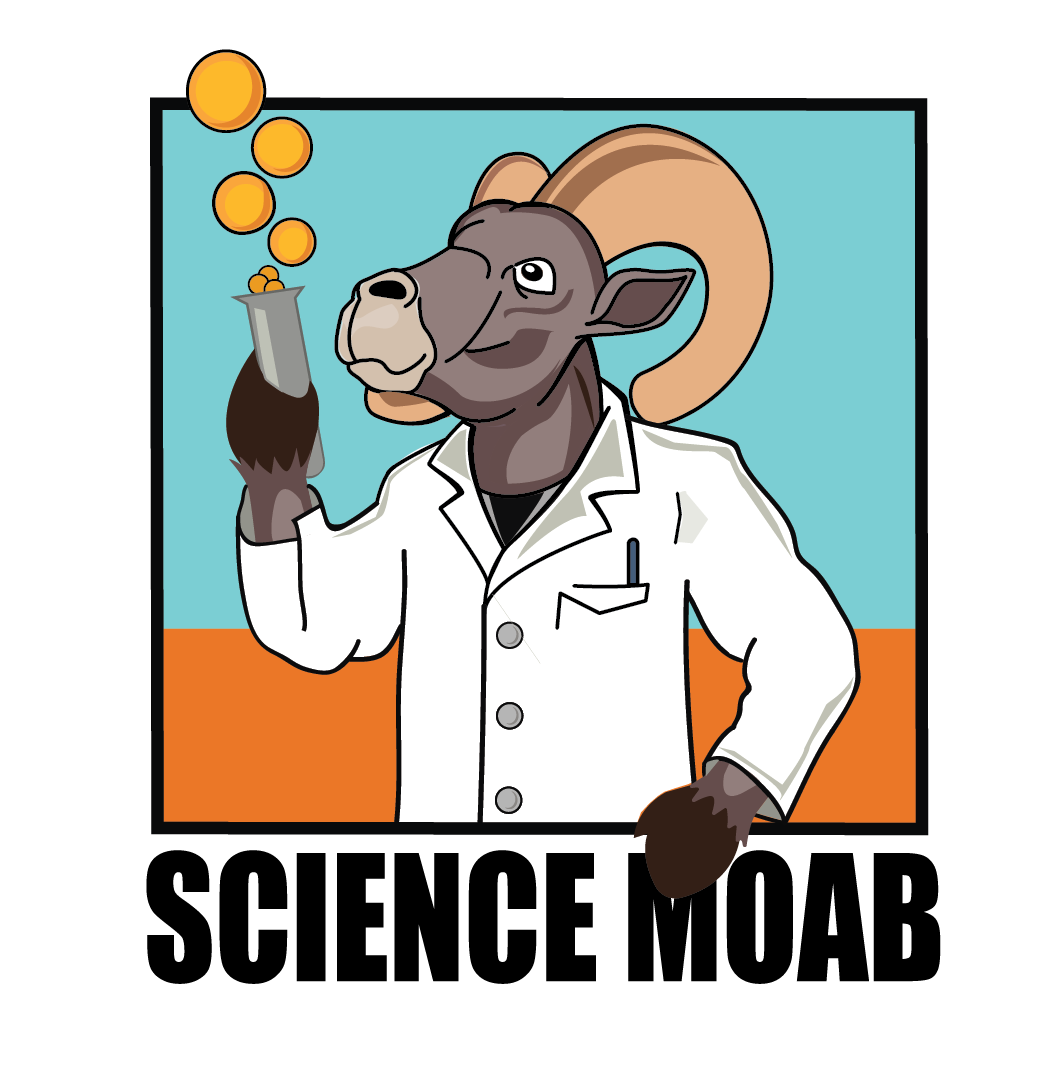Some information may be outdated.
Plants are sending out signals all the time. Have you noticed?
Science Moab spoke to Adrienne Godschalx, who grew up in Moab and now studies “chemical ecology,” examining the role that chemicals play in how living beings interact with their environment. Science Moab host Kristina Young asks Adrienne about what it means to study chemical ecology and what chemical signaling occurs in our ecosystems. This interview was edited for length and clarity.
Science Moab: What kinds of chemical compounds are plants making out in the Southeast Utah desert?
Adrienne: The plants that live in the desert here are under some pretty intense stress. Their ability to survive in these desert conditions has created a fascinating chemical landscape. Sagebrush itself is an icon of chemical ecology: it is one of the better-studied plants because it is so chemically interesting. I mean, you don’t even have to see it to know that sagebrush is there, you can be out on the trail and suddenly smell this plant. When I smell sagebrush, it always brings me home. The plant chemicals in the desert are more concentrated partly because these chemicals play a role in protecting plants in stressful environments.
Science Moab: How do you study chemical ecology?
Adrienne: I collect the air surrounding a plant, so I hook up a pump to a glass vial that has a substrate in it that is really good at grabbing compounds out of the air. The pump pulls air over that substrate, so the mint smells, the lemon scent, the sage scent: all of that will get stuck to this substrate in the glass vial. Then I put the air into a fancy machine that is basically a big oven, and the compounds get heated up and sent through a column. We can figure out how heavy or light these different compounds are based on how long it takes them to go through this column, and then figure out what chemical compound it is. You can also do similar things with chemicals that are in the leaves or coming from mammals. Chemicals can be extracted from almost anything in nature. It can be whatever’s in the air, whatever’s in the tissue, whatever’s in the soil, whatever’s in the water. You can take any of those parts of nature and essentially run the chemistry of what is there.
Science Moab: Now that you have all of this knowledge and you come back home to the desert that you grew up in, what is your experience being out there?
Adrienne: When I am exploring the desert now, I’m surprised how much I pay attention to the insects. For the longest time, I would only look at the plants, because that’s where the chemistry is. But the things that are paying attention to the chemistry, the things that are much more olfactory-attuned to that chemistry are the insects. Where are they and what are they doing? Who’s eating what? Is it an ant? Is it an aphid?
I started loving plants, then became a backdoor entomologist and a backdoor chemist. It’s so much fun to expand. I’m constantly delighted by the things that never used to interest me before. There’s also some brilliant work happening locally. I have this fun experience that I grew up here and learned about Mormon Tea and Rice Grass and all of the names that a fourth-grader learns on field trips. Now when I read about these plants I think “wow, I know that plant, that’s my familiar face.” So that’s a really cool experience, to understand both the Latin name and friendly face of the plant and also be able to interpret the deeper ecology that’s happening here.
Talking with Moab local and researcher Adrienne Godschalx about plant communication
Appreciate the coverage? Help keep local news alive.
Chip in to support the Moab Sun News.





